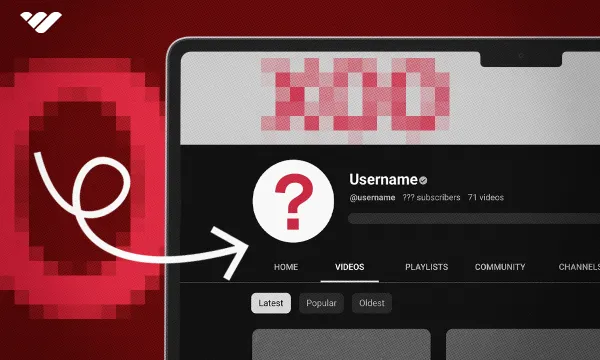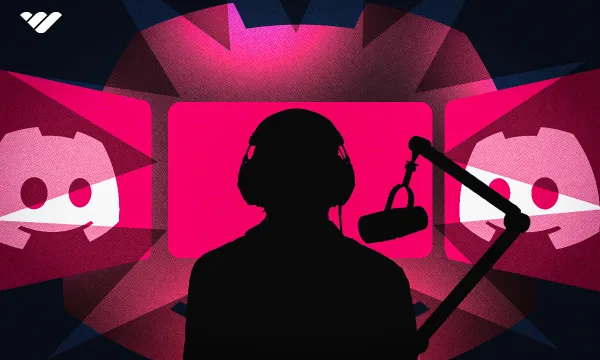Making money on YouTube is a dream for most content creators…but the path to monetization isn't always clear. While subscriber count is often seen as the holy grail of YouTube success, it's just one piece of the puzzle.
The truth is, no magic number of subscribers guarantees income. Earnings depend on various factors, including view counts, engagement rates, and audience demographics.
In this article, we'll explore the nuances of YouTube monetization and strategies to maximize your earning potential—regardless of your subscriber count.
How Many Subscribers Do You Need to Make Money on YouTube?
YouTube offers multiple ways to earn revenue. However, to start making money on YouTube natively, you need to join the YouTube Partner Program (YPP).
The YouTube Partner Program has specific eligibility criteria that creators must meet before they can monetize their content. As of 2024, to monetize from your YouTube channel, you must have at least 1,000 subscribers and 4,000 valid public watch hours in the last 12 months. Additionally, all creators must comply with YouTube's community guidelines and terms of service.
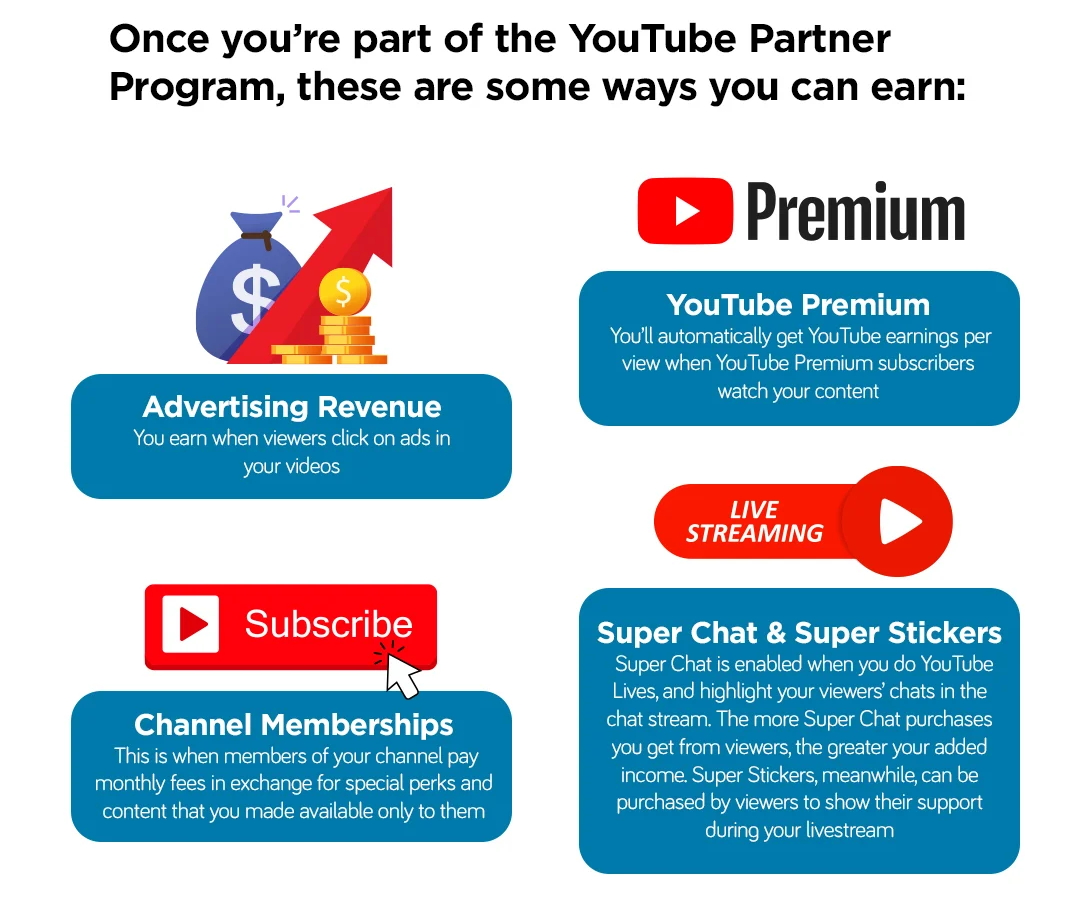
While reaching 1,000 subscribers is a key milestone, focusing on quality over quantity is important, especially for new creators. Why? Because engaged subscribers who regularly watch, like, comment, and share your content are more likely to engage with monetization features.
Average Earnings at YouTube Subscriber Tiers
Let’s understand the revenue potential across various subscription levels so you can monetize your YouTube audience effectively.
500 YouTube subscribers
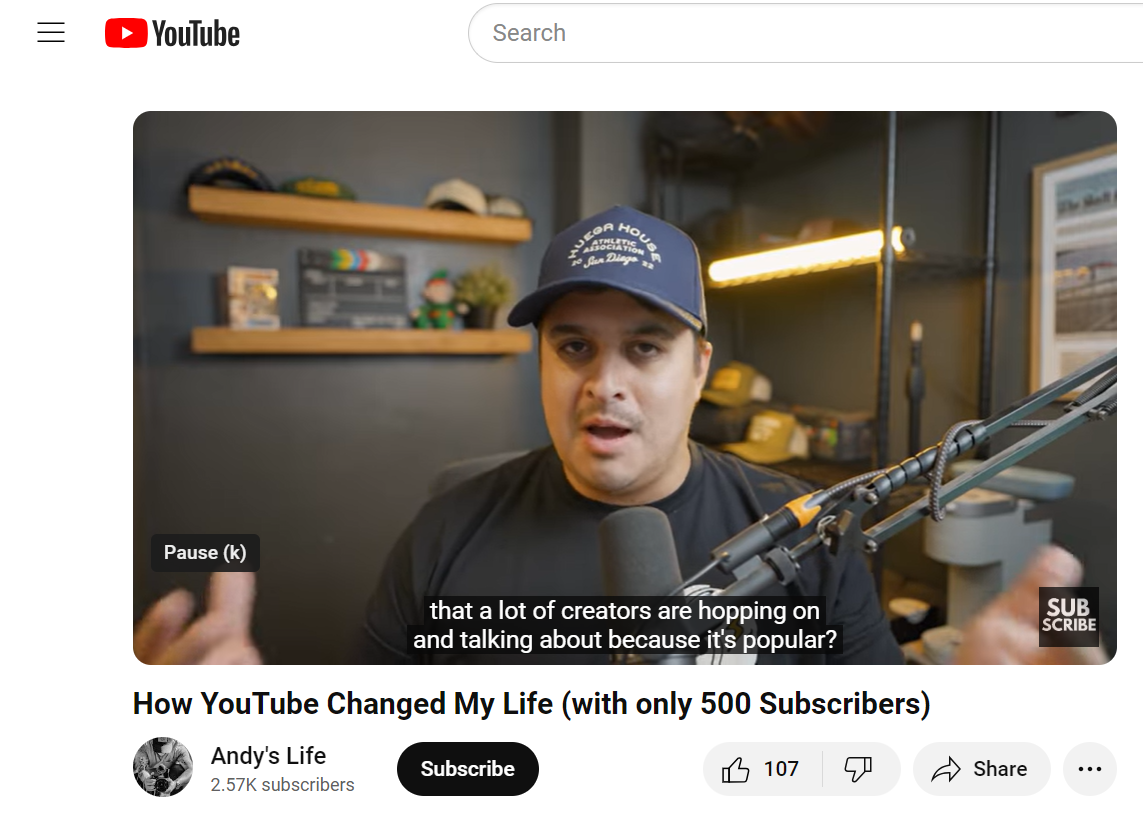
At this tier, focus on building your audience. While you don’t qualify for monetization programs yet, investing in creating a loyal, engaged base of followers will pay off in the long term once you hit those higher subscriber numbers. This means posting quality content consistently so people know they can count on you to show up with fresh material on a regular basis.
One YouTube creator talked about how YouTube changed his life and his journey to his first 500 subscribers:
“I started to challenge myself, go out with my camera, come back with something cool; whether it was hiking to a mountain or a frozen waterfall. Even at zero subscribers I started to build a work ethic and prioritize YouTube. Even in the cloud of self-doubt and negative thoughts, I was actually building skills that would help me later on in my YouTube career.”
1,000 YouTube subscribers
This is the minimum subscriber threshold to qualify for the YouTube Partner Program. Ad revenue starts at this tier, but it’s still modest. Some creators might start exploring sponsored content, though deals are rare at this level. You’ll need a larger audience before brands see a meaningful opportunity for that type of work with you.
As a creator with 1000+ subscribers, your earnings are primarily affected by factors like:
- Niche: Topics such as Finance and investing, technology and gadgets, and health and wellness typically have higher ad rates.
- Video length and frequency: Advertisers generally prefer videos between eight and 12 minutes long. This length allows for multiple ad placements without overwhelming viewers.
- Audience location and demographics: Viewers from countries with higher advertising rates (like the US, UK, and Canada) generate more revenue. Advertisers often pay more to reach young adults, middle-aged professionals, or affluent audiences with higher disposable incomes.
One YouTuber shared that at this subscriber tier in the travel space, he was making about $100 a month, averaging 23,000 views typically a month and about 2,000 hours watch time per month.

10,000 YouTube subscribers
Ad revenue becomes more substantial once you hit 10,000 subscribers. Sponsorship opportunities increase, and brands start noticing channels at this size.
Here’s how you can monetize YouTube once you hit the 10K subscriber mark:
- Sponsorship: Rates range from $200-$1,000 per video, depending on niche and engagement. You earn through this avenue by partnering with relevant brands for ads or promoting products in video.
- Affiliate marketing: Select products and services that align with your content and audience interests. This ensures authenticity and increases the likelihood of conversions. Remember to disclose affiliate relationships to maintain transparency.
- Super Chat: This feature allows viewers to pay to have their messages highlighted in the chat (and thus noticed) when their favorite creator is livestreaming. Note: This is specifically relevant for creators who live stream (like a gamer on Twitch), versus others who only post videos.
Melissa Guller of Wit & Wire, whose YouTube channel is focused on course creation tips, hit the 10,000 figure mark almost two years after launching the channel. She shared:
“I released 35 videos over that two-year time span; way less than any expert would recommend. What I did well was create quality videos. If you focus on YouTube and release a video weekly, you could hit that milestone a lot faster than I did. I’d earned $4,011 at the 10,000 subscriber mark.”
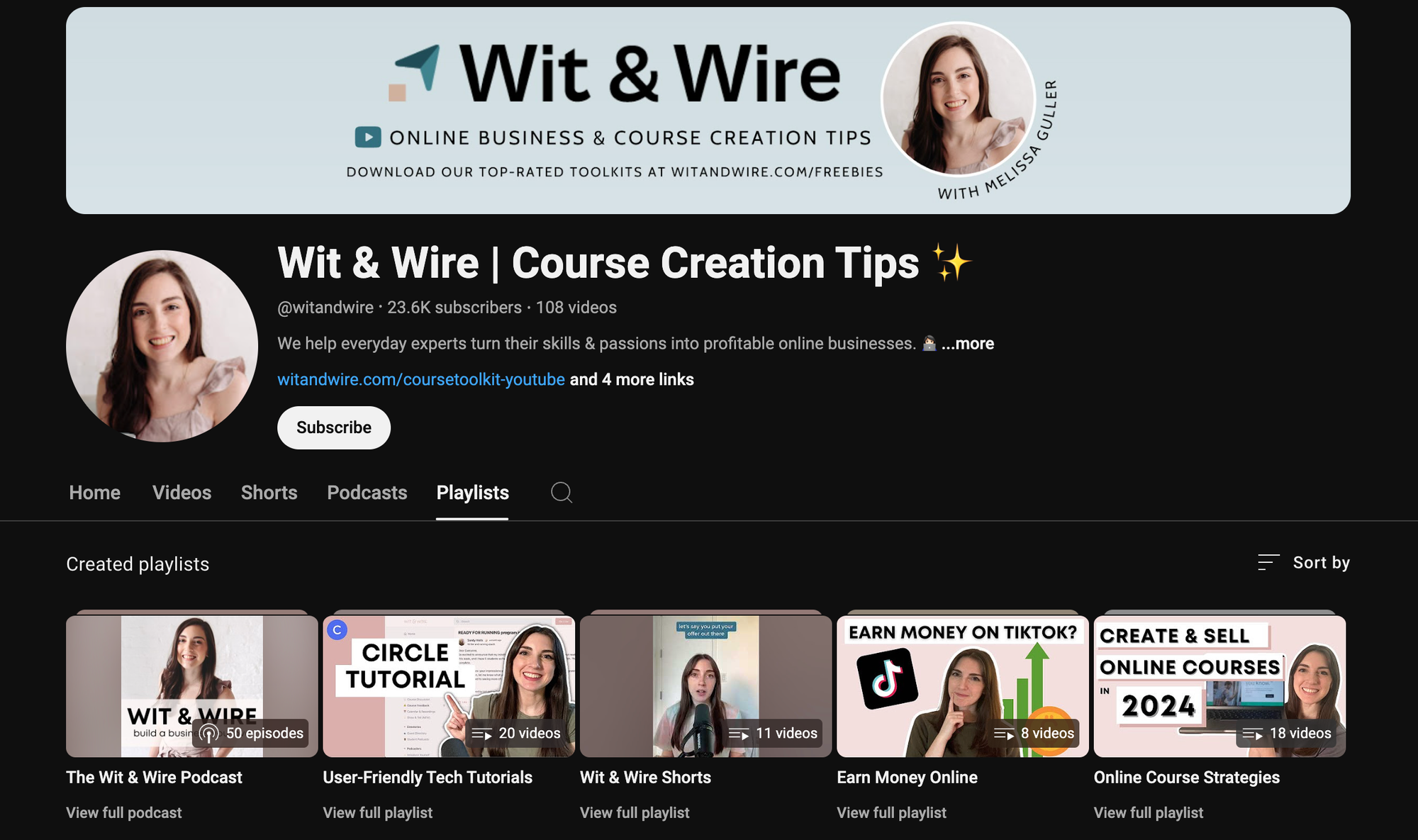
100K YouTube subscribers
Often considered a tipping point for "professional" content creation, ad revenue at 100,000 subscribers can be significant, especially with high view counts. Sponsorship deals also become more common and lucrative with rates ranging from $1,000-$10,000+ per video.
- Long-term partnerships: YouTube creator PewDiePie had a long term partnership with energy drink company G Fuel. One of the key partnership highlights was the release of exclusive G Fuel flavors in collaboration with PewDiePie, such as the "PewDiePie" flavor. The brand further integrated with PewDiePie by creating special-edition cans, shaker cups, and even a starter kit PewDiePie's branding and iconography.
- Merchandise lines: YouTubers can partner with clothing or merchandise companies to create and sell branded products. For example, Good Mythical Morning, a comedy duo with over 17 million subscribers, has a long-term partnership with CreateMyTee for their branded merchandise.
- Crowdfunding or membership programs: YouTube Channel Memberships allow creators to offer exclusive perks to paying subscribers. Fans pay a monthly fee for access to special content, badges, and emojis. Linus Tech Tips offers channel members perks like loyalty badges next to their name in comments and live chat, custom emojis, and access to exclusive updates.
- Additional opportunities: A high subscriber base can open doors for speaking engagements, consulting, or even book deals, depending on your niche. MrBeast is one example - this creator has been a featured speaker at creator-focused events such as VidCon, where YouTube and digital media creators gather to share insights, learn from each other, and connect with fans.
How to Grow Your YouTube Subscriber Count
Here are some time-tested ways to grow your subscriber count on YouTube:
Create high-quality, engaging content
Creating compelling YouTube content requires creativity, strategy, and technical skill. Start by narrowing your niche to stand out. The more specific the content on your channel, the more likely you are to attract a dedicated audience. Instead of "cooking videos," focus on "quick vegan meals for college students."
From there, plan your videos carefully and improve the production value by investing in better equipment: things like ring lights for better facial lighting and tripods for static shots. You can also learn basic video editing techniques - software like Adobe Premiere Pro and Final Cut Pro X - to make video production a breeze. Then, once your videos are ready, craft compelling titles and thumbnails with bold text to draw attention to them.
Finally, consistency is key - maintain a regular upload schedule to build a loyal following. For over a year, filmmaker and YouTuber Casey Niestat consistently uploaded a daily video documenting his life and experiences. This commitment to regular content creation led to significant growth in his audience and established him as an influential figure in the online video space.
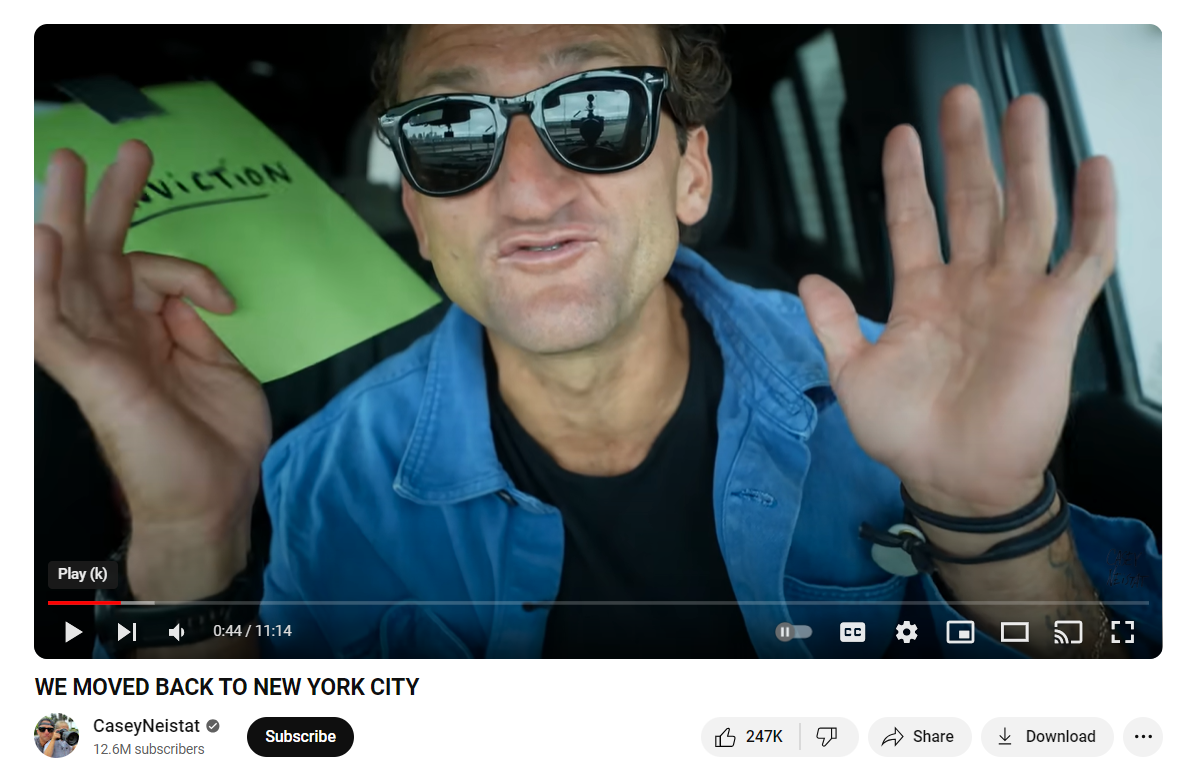
Optimize your channel
Optimizing your YouTube channel is essential to growing your audience and maximizing your content's impact. Create a channel trailer that introduces new viewers to your channel, captures the essence of your content, and encourages subscriptions. Include your best clips, explain your upload schedule, and end with a clear call to action to subscribe.
Organize content with playlists to improve channel navigation, increase watch time, and help viewers find specific content easily. Playlists can be themed, series-based, or categorized by topic.
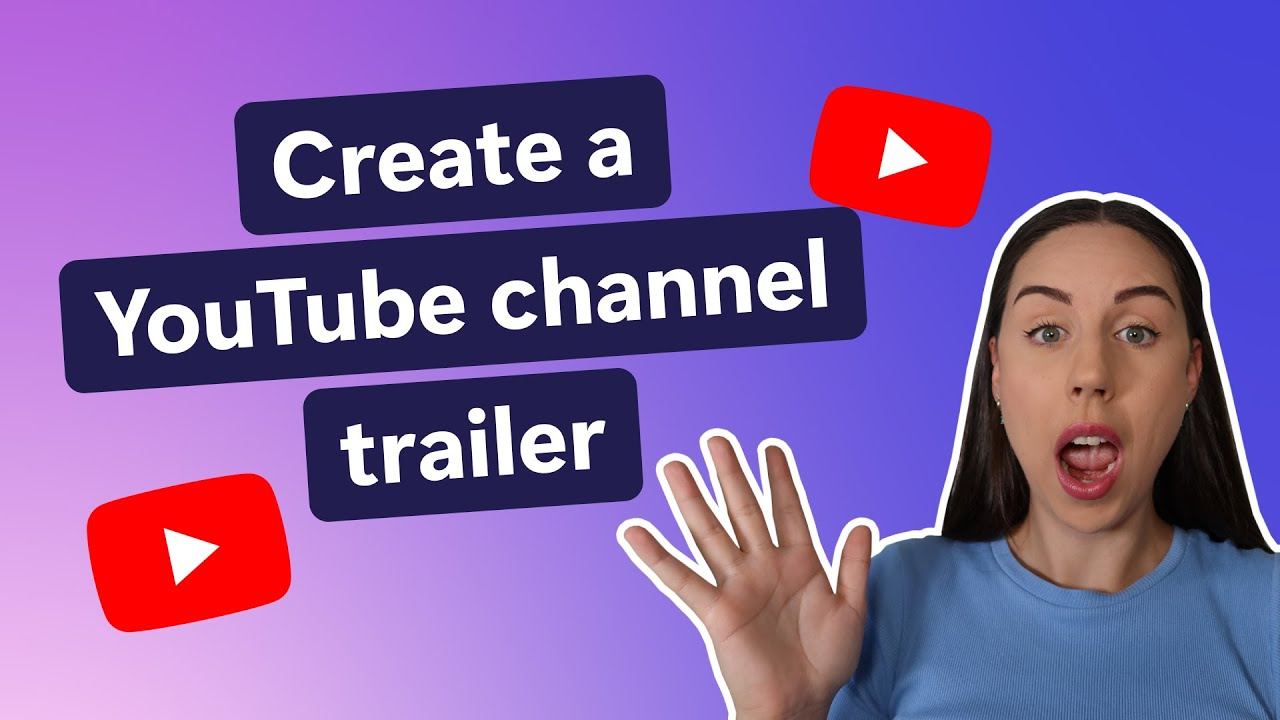
Engage with your audience
Building a strong connection with your viewers is crucial for channel growth. Respond to comments, address questions, thank viewers for their support, and participate in discussions to build a sense of community.
Remember to ask for feedback and suggestions - getting viewers’ feedback on your content shows you value their opinions and helps create content that resonates with them. This can potentially increase watch time and subscriber numbers.
As your subscriber base grows, host Q&A sessions or live streams. Share behind-the-scenes insights, or discuss trending topics in your niche.
Live sessions are a particularly great way to engage for a couple of reasons:
- They create a sense of exclusivity and excitement that encourages viewers to tune in regularly.
- Live streams often appear in YouTube's recommended sections and search results —this exposes your content to potential new viewers.
- Existing subscribers get notified when you go live, potentially bringing in their friends or followers.
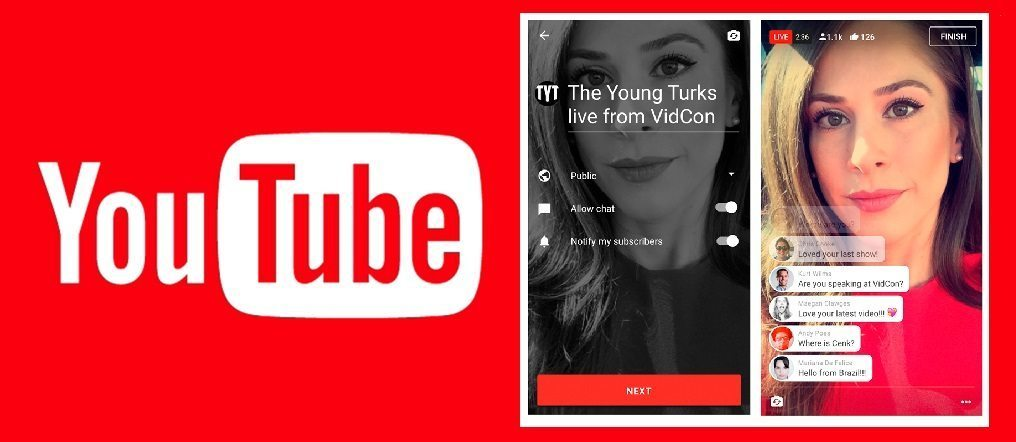
Collaborate with other YouTubers
You're grinding away on your YouTube channel, always on the lookout for ways to get those numbers up. But here’s a little secret that might just be your next big break — teaming up with other creators can not only boost your views and subs but can seriously up your earning potential, too.
Connect with other YouTubers who create content similar to yours and with a similar audience base size. Engage with their videos, leave thoughtful comments, and build genuine relationships. This can lead to cross-promotion opportunities, shared audience growth, and valuable insights into your niche.
Participate in collaborations where you produce content jointly with another creator or exchange shoutouts. This exposes your channel to new audiences and adds variety to your content. Collaborations can take many forms, such as challenges, discussions, or combined expertise videos. Note: Make sure it’s a mutually beneficial partnership.
Lifestyle creator Scherezade Shroff (Sherry) jumped on the Mukbang trend, which originated on Korean live-streaming platforms around 2010. Mukbang, which stemmed from Korea’s social eating culture, is the concept of having a virtual dining companion for people eating alone. On her channel, Sherry interviewed fellow creators while trying out various delicious foods, giving her viewers an intimate peek into their personal lives.

Promote your channel
Sharing your videos on social media platforms can significantly amplify your reach. Create engaging snippets or teasers from your videos to post, making sure to use relevant hashtags and optimize posting times for maximum visibility and engagement.
Participate in relevant online communities such as whops, forums, subreddits, Facebook groups, or Discord servers where your target audience is. Share valuable insights and occasionally mention your YouTube content when relevant.
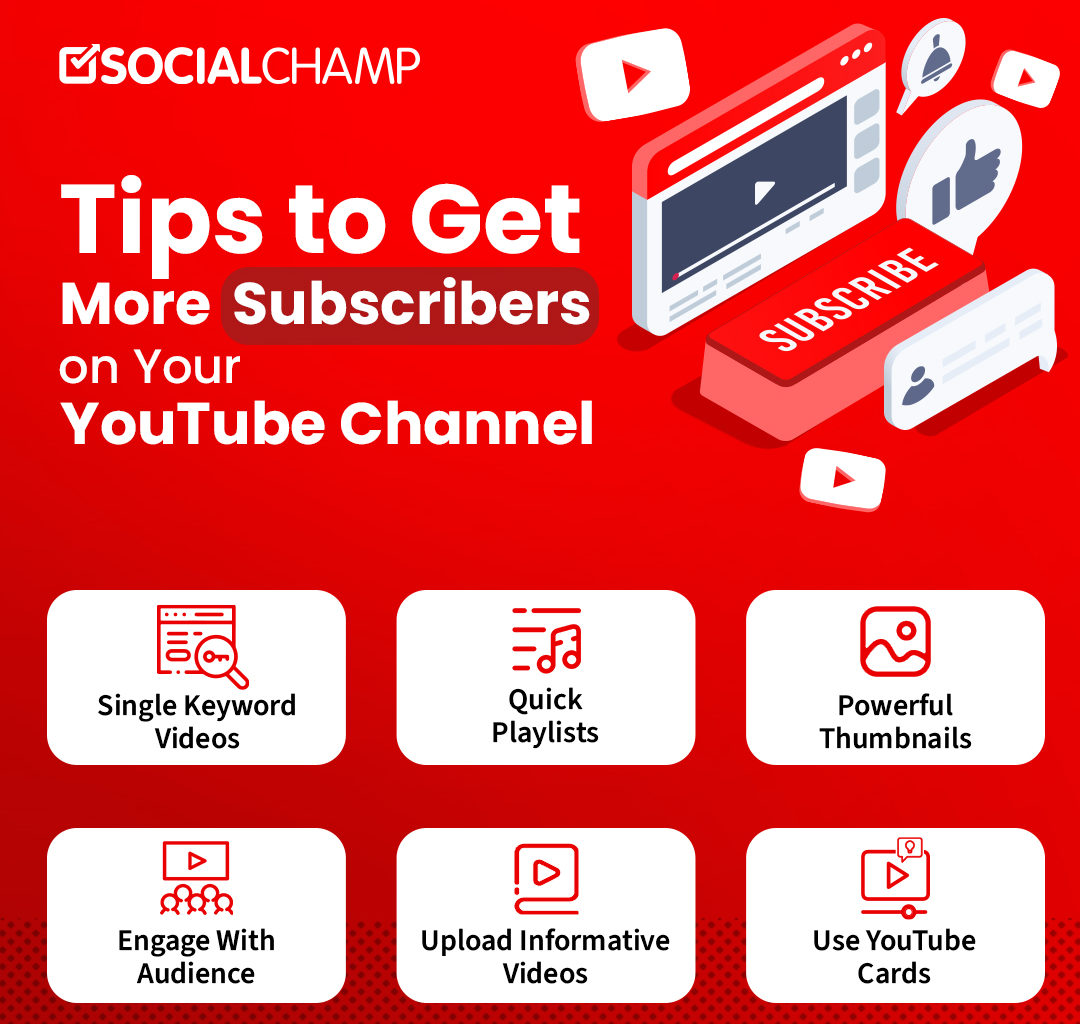
Video content takes time and effort to get right, so make the most of the content you own. Repurpose videos for platforms like TikTok, Instagram Reels, or podcasts to reach a wider audience and funnel viewers back to your main YouTube channel.
Focus on organic growth and community building initially and hold off on paid advertising until you've built up a following.
Analyze and adapt
Use YouTube Analytics to track metrics like watch time, audience retention, and click-through rates. Analyze which videos perform best and why. Use this data to inform your content strategy.
Experiment with different content types such as tutorials, vlogs, interviews, or live streams to discover what resonates best with your viewers and can potentially attract new subscribers with different interests.
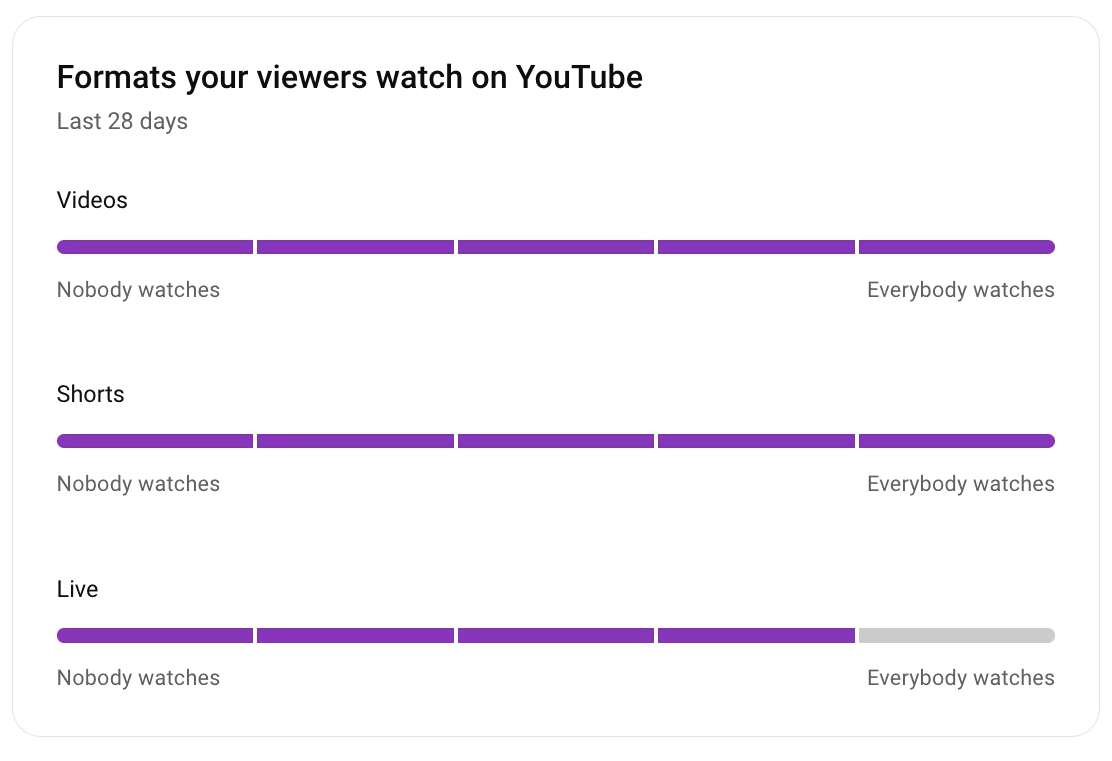
Finally, stay updated with trends and algorithm changes by following official YouTube announcements and credible industry sources for updates. Engage with the creator community to share insights. Adjust your content strategy to align with platform changes, such as optimizing for new features or prioritizing metrics that the algorithm favors.
How to Earn More With YouTube
Diversifying your income streams is key to maximize your earnings from YouTube. Explore sponsorships and brand deals by creating a media kit that showcases your channel's strengths and audience demographics. When approaching potential sponsors, focus on brands that align with your content and values. As you negotiate terms, consider factors like exclusivity, content rights, and fair compensation.
Another effective way to increase revenue is through merchandise sales. Create your own product line that resonates with your audience, such as t-shirts, mugs, or digital products related to your content. Utilize YouTube's merch shelf feature to showcase these items directly on your channel page and in video descriptions.
By implementing these strategies, you'll be well on your way to growing your YouTube earnings over time.
Increase Your YouTube Subscriber Count (and Revenue!) With Whop
What does it take to make serious money on YouTube? Popular YouTuber and entrepreneur Roberto Blake puts it well: "Success on YouTube isn't just about going viral or having millions of subscribers. It's about building a loyal community and providing consistent value. The money follows when you focus on creating content that genuinely helps or entertains your audience."
As with any business, the key to success is learning everything you need to know in order to grow, scale, and monetize. While you can learn with trial and error, the best way to learn is from others who have already mastered the art of YouTube monetization. Whop is home to hundreds of social media moguls who share their knowledge, tips and tricks through online courses and communities.
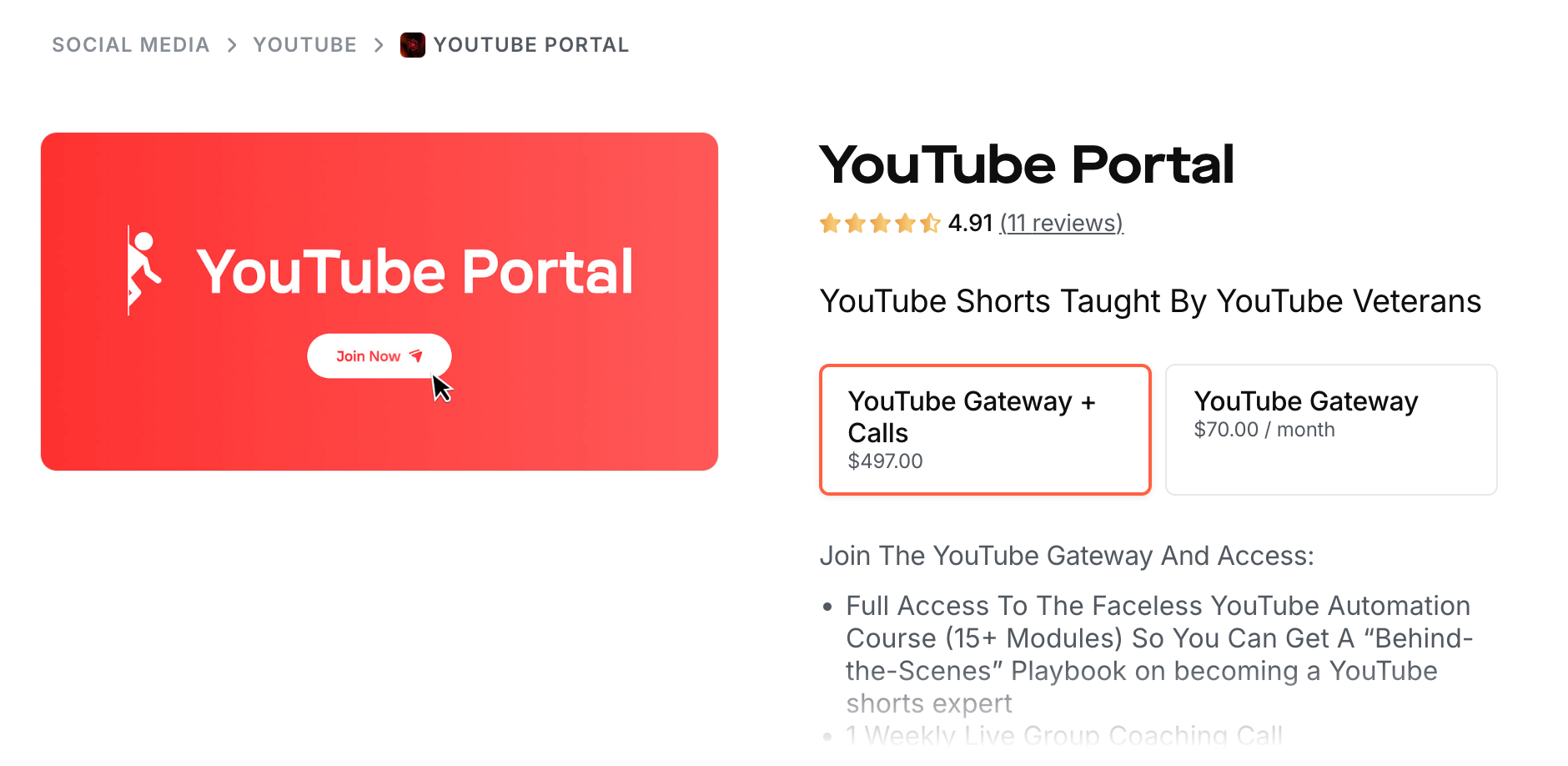
For example, YouTube Portal teaches you how to master faceless YouTube shorts. When you join the community, you get access to 7-figure success coaches, a 90-day action plan, done-for-you video templates and scripts, and weekly breakdowns of successful channels so you can copy the blueprint of viral YouTube videos.
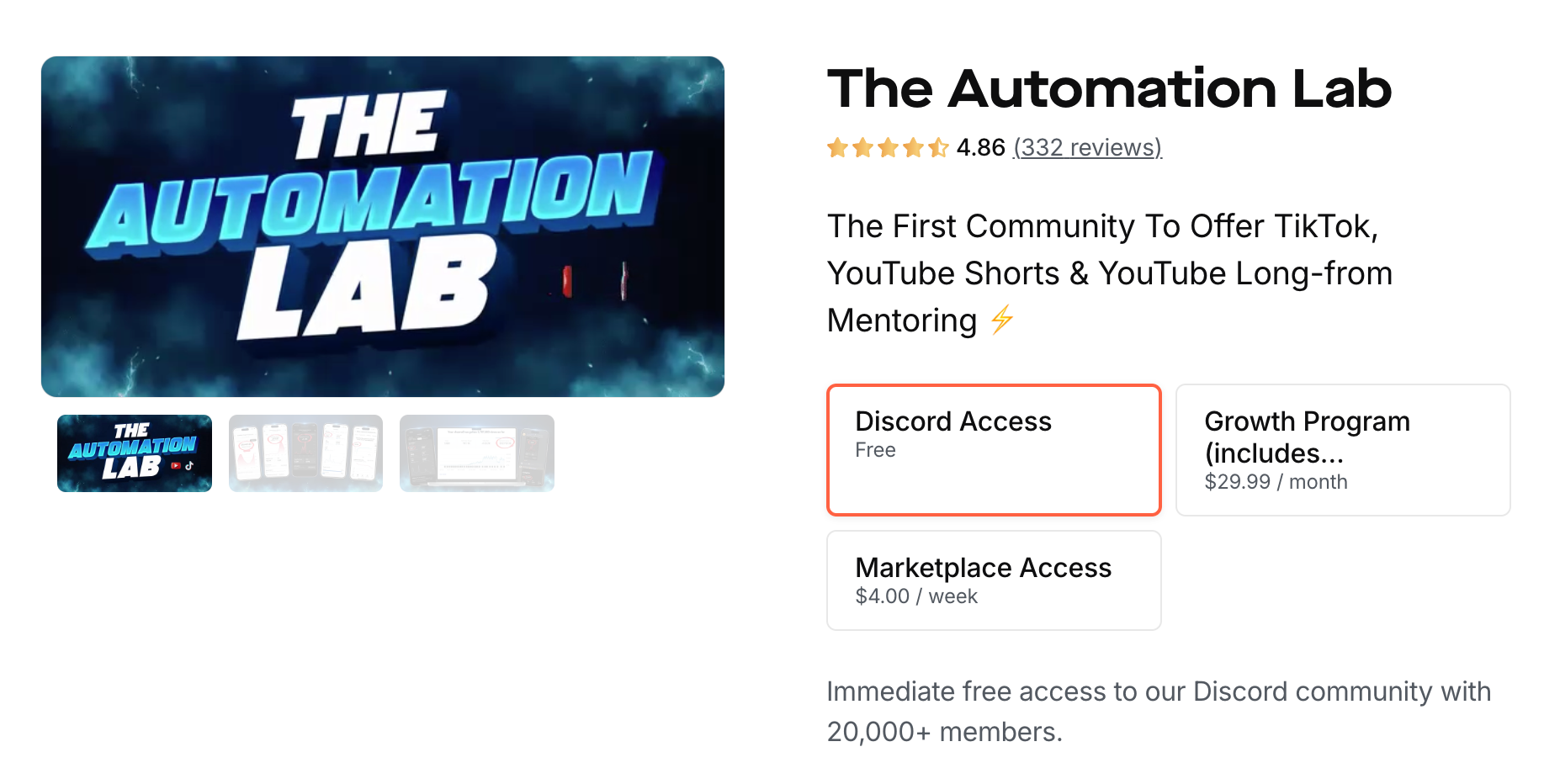
Another option is The Automation Lab, which covers YouTube and TikTok strategies. With this community, you get access to 24/7 coaching, over 60 pre-recorded webinars, text courses, live webinars and group calls, and an asset library.
These are just two examples of the hundreds of courses and communities that you can find on Whop. Don't go it alone - find the right education for your needs, grow your YouTube subscriber count, and start making money!
FAQs
Ready to start making money on YouTube? We’ve answered some of the most commonly asked questions on the topic to help you get started.
How to make money on YouTube for beginners?
Start by creating engaging content regularly. Optimize your video titles and thumbnails, build a loyal audience, and use relevant keywords. Next, enable monetization, explore sponsorships, promote affiliate products, or sell merchandise. Consistency, quality, and audience engagement are key to growing your channel and earning revenue.
What is the YouTube Partner Program?
The YouTube Partner Program allows content creators to monetize their channels. Eligible creators can earn revenue from ads, channel memberships, and other features. To join, channels must meet specific requirements, including subscriber count and watch time. Once accepted, creators can access various tools to grow their audience and income.
How to make money on YouTube fast?
Success on YouTube often takes time and dedication. However, there are a few tactics you can try to monetize faster: exploit trending topics for viral potential, create clickbait thumbnails, and collaborate with established YouTubers for exposure. You can also use controversial content to spark debate. Note: Be careful not to violate platform policies.
How to make money on YouTube without showing your face?
Create engaging tutorials, animations, or voiceovers. Develop a unique niche or character to stand out. Utilize stock footage, screen recordings, or hand demonstrations for visuals. Collaborate with fellow creators to expand your reach. Consistency is key—upload high-quality content regularly. As your channel grows, monetize through ads and sponsorships.
